Meet the real-life Rosie the Riveter, who was unknown until a years-long investigation revealed her identity
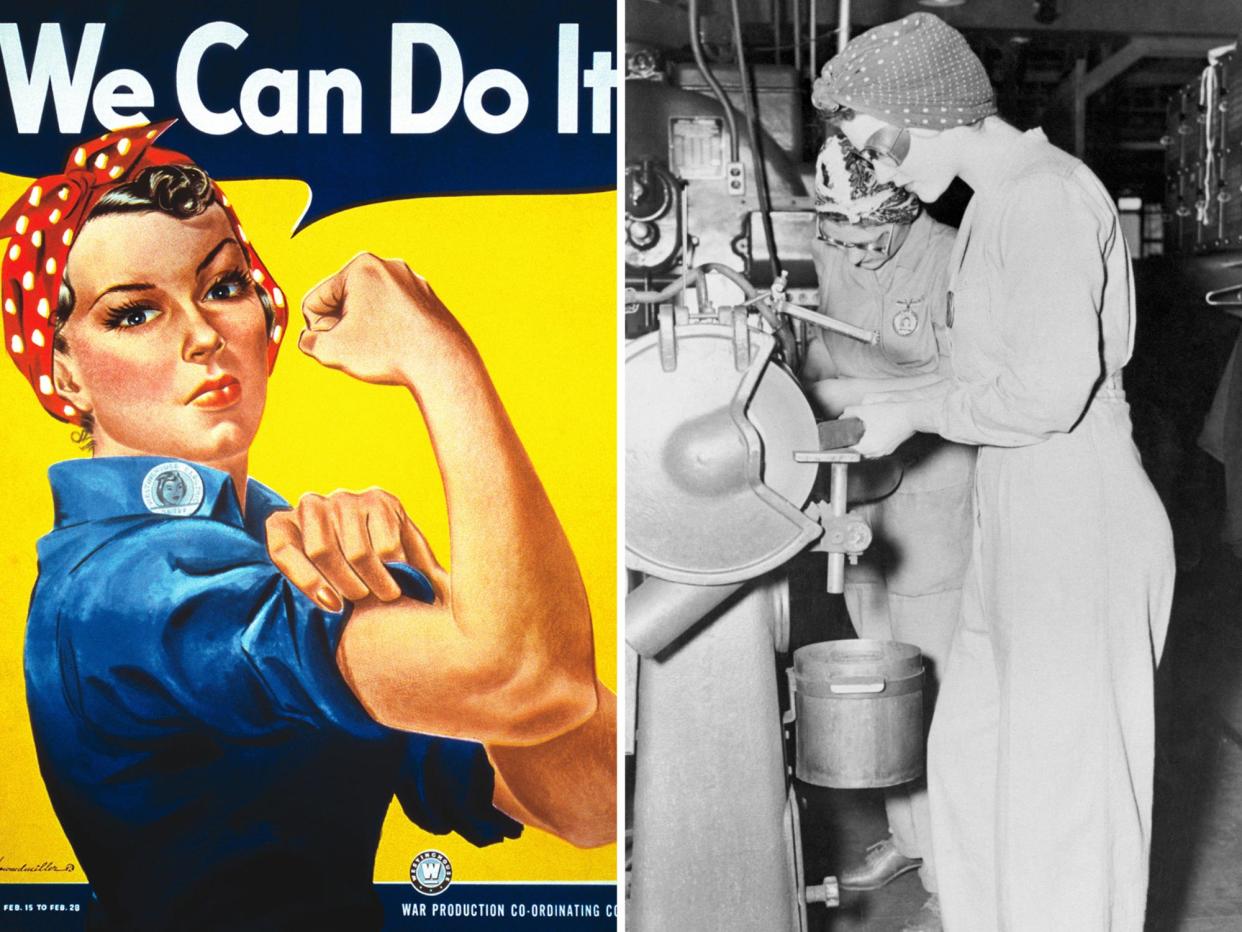
- Oops!Something went wrong.Please try again later.
- Oops!Something went wrong.Please try again later.
Rosie the Riveter is one of the most iconic images in pop-culture history.
For 30 years, Geraldine Hoff Doyle was believed to be the inspiration for Rosie the Riveter.
However, an investigation in the 2000s found another worker, Naomi Parker Fraley, actually inspired the image.
During World War II, women assisted in manufacturing wartime necessities like gas masks.
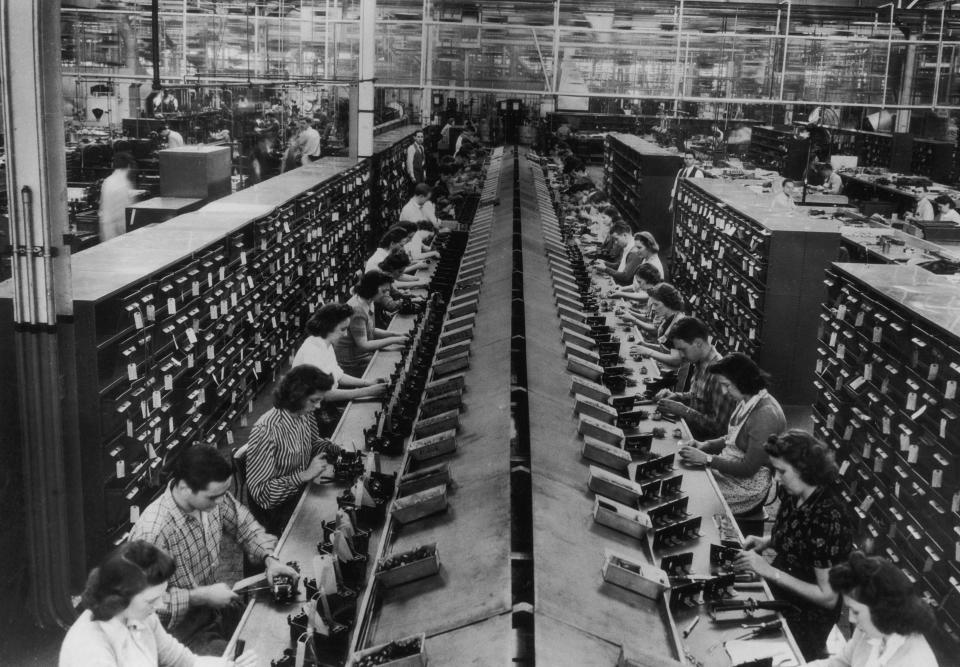
Before the war, women were in traditionally "female" fields such as nursing and teaching.
After Pearl Harbor, many women entered the armed forces at astonishing rates. In 1943, more than 310,000 women worked in the US aircraft industry, making up 65% of the industry's total workforce. Before the war began, women had made up just 1% of the industry.
According to Forbes, between 1940 and 1945, female participation in the US workforce as a whole increased from 27% to nearly 37%. By 1945, one in every four married women worked in jobs outside the home.
Many women working in military factories were photographed wearing bandanas to tie back their hair.
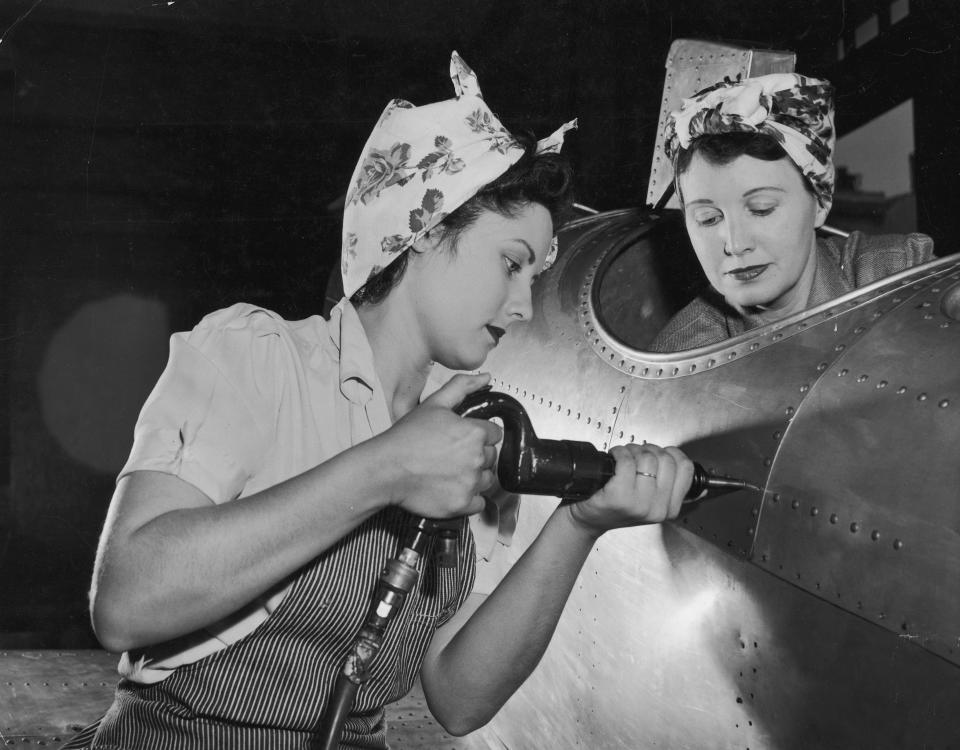
One photo appeared to catch the attention of a Pittsburgh artist named J. Howard Miller, who created a poster for the Westinghouse Electric Corporation in 1942.
The woman in Miller's poster soon came to be known as Rosie the Riveter.
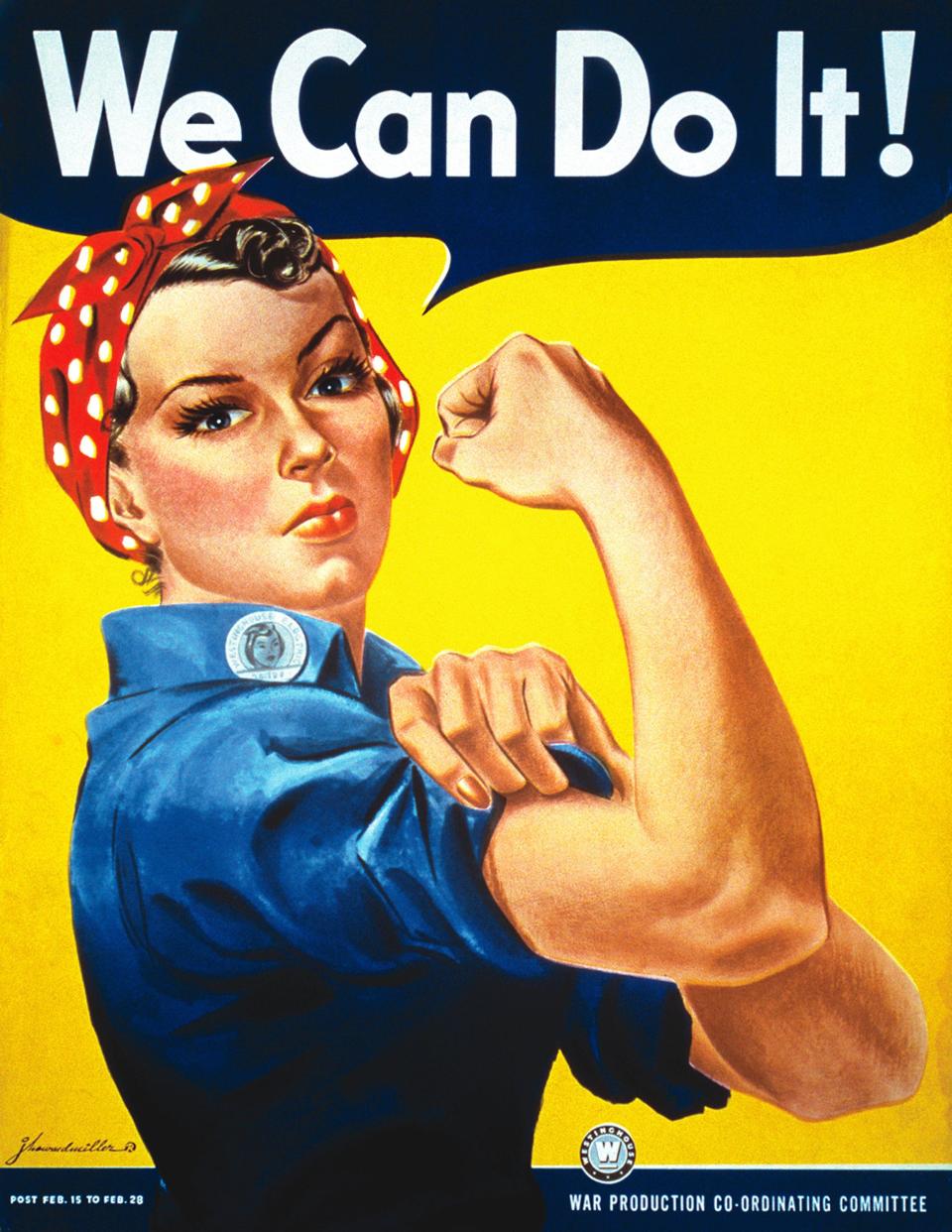
The image featured a "Rosie," as female factory workers came to be known at the time, flexing her bicep and wearing a red polka-dot bandana and wearing a riveter's uniform. Above her were the inspiring words "We Can Do It!"
The woman in Miller's poster soon came to be known as "Rosie the Riveter" after musicians Redd Evans and John Jacob Loeb released a popular song with the same title in 1943. Its lyrics say, in part, "All the day long, whether rain or shine / She's a part of the assembly line / She's making history / Working for victory / Rosie the Riveter."
According to The New York Times, the poster was initially only displayed in the Westinghouse Electric Corporation plant to deter absenteeism and strikes among female workers, who were still not being paid equally to their male counterparts. However, after the poster was published nationally in the early 1980s, it became a symbol of the feminist movement and one of the most recognizable images in pop-culture history.
The inspiration for the iconic Rosie the Riveter image was initially believed to be Geraldine Hoff Doyle, a Michigan factory worker.
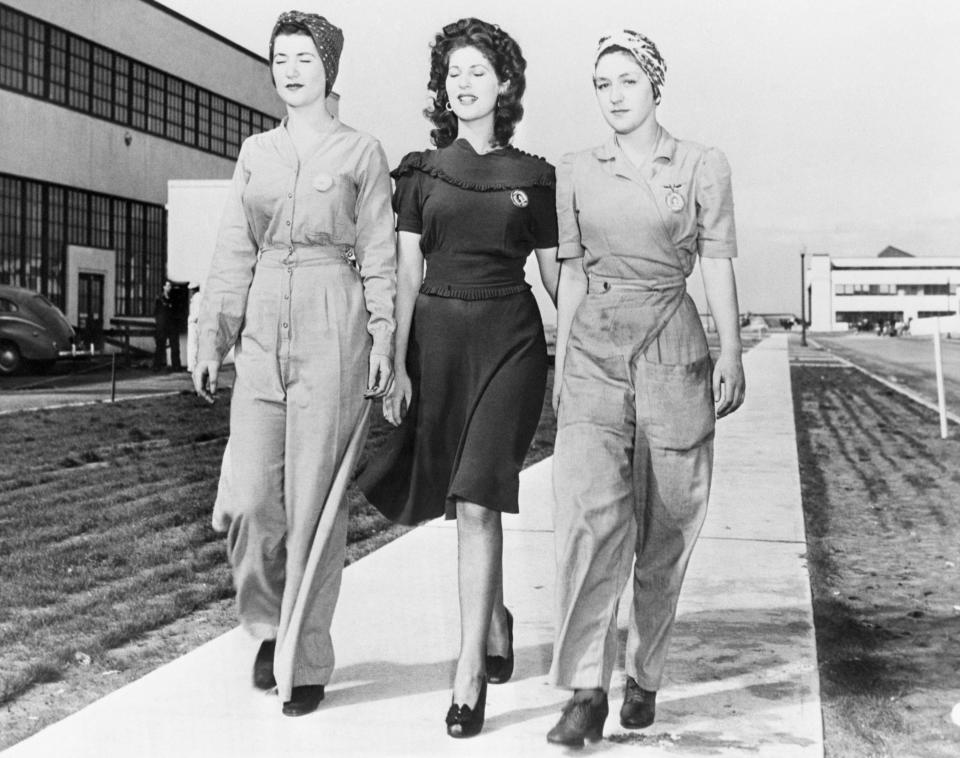
Geraldine Hoff Doyle, who worked in a Navy plant in Michigan, was long considered to be the inspiration behind the iconic image. According to The New York Times, she came forward in the 1980s and said she was the woman in a photo believed to have inspired Miller's poster.
Doyle had seen the photo without its original caption and mistakenly identified herself as the woman in the photo. Bearing a striking resemblance to the woman, she was widely accepted as the real-life Rosie the Riveter and promoted in the media as such.
It wasn't until 2009, when 88-year-old Naomi Parker Fraley (pictured left in the photo above) attended a reunion of war-era Rosies, that she spied a photo of her working at the Naval Air Station in Alameda, California, in a historical display — and saw another woman's name listed underneath the image as the inspiration for Miller's famous "We Can Do It!" poster.
"I couldn't believe it because it was me in the photo, but there was somebody else's name in the caption: Geraldine," Parker Fraley told People in 2016. "I was amazed."
The true inspiration for Rosie the Riveter was identified as Naomi Parker Fraley, a waitress from California who worked at the Naval Air Station in Alameda.
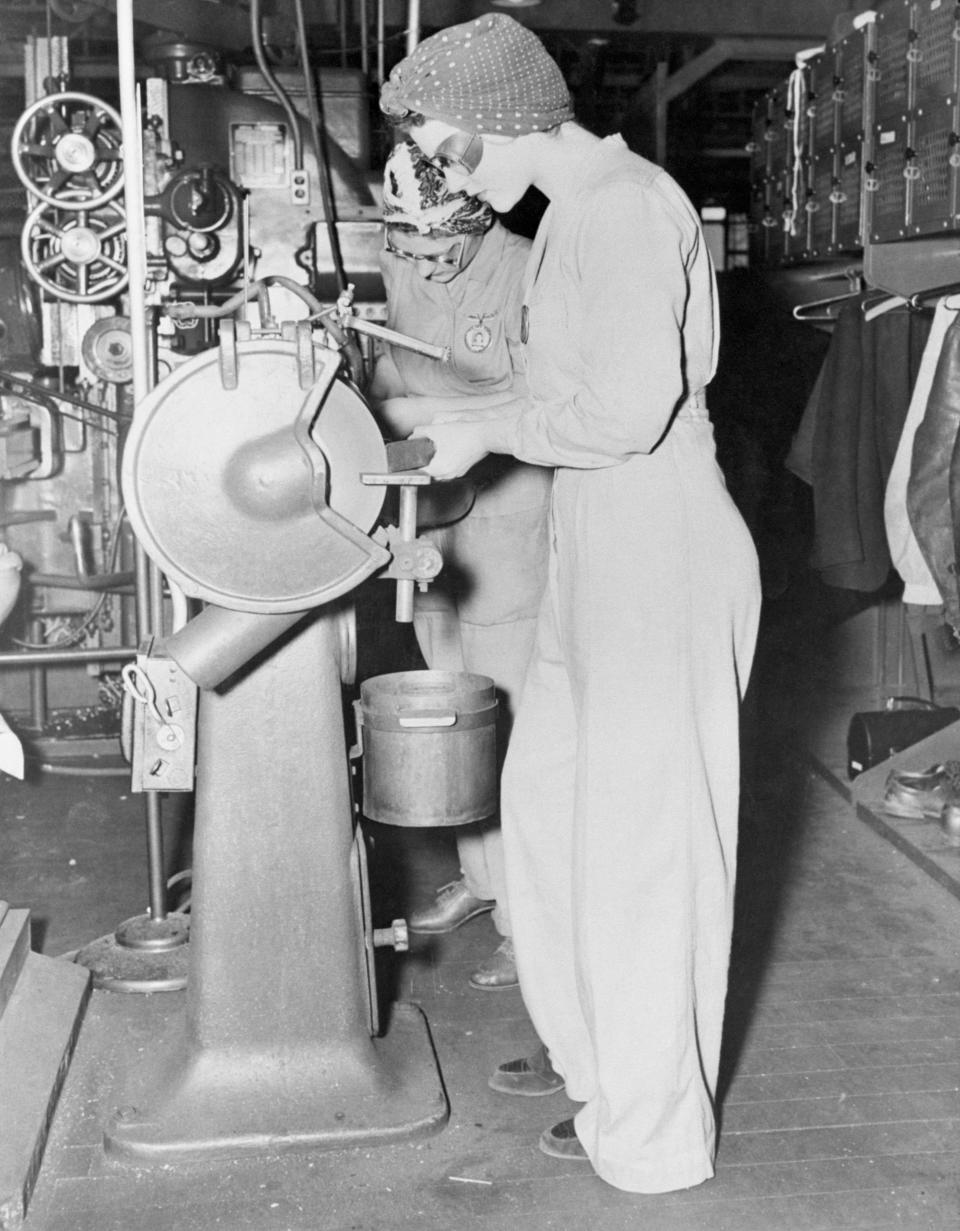
The photo in question showed a then-20-year-old Naomi Parker Fraley wearing her signature red-and-white-polka-dot bandana and working on a turret lathe. It was taken in 1942 by a photographer touring the Naval Air Station and was printed in magazines and newspapers nationwide.
"I even got fan mail!" Parker Fraley told People.
Naomi Parker Fraley had seen the image when it first came out and although she had saved the original newspaper clipping, she didn't know its true significance — or the fact that another woman had innocently come forward claiming she was the one pictured.
After learning that she had been the inspiration for Miller's poster and that another woman had been misidentified as her for more than 30 years, Parker Fraley got to work trying to set the record straight.
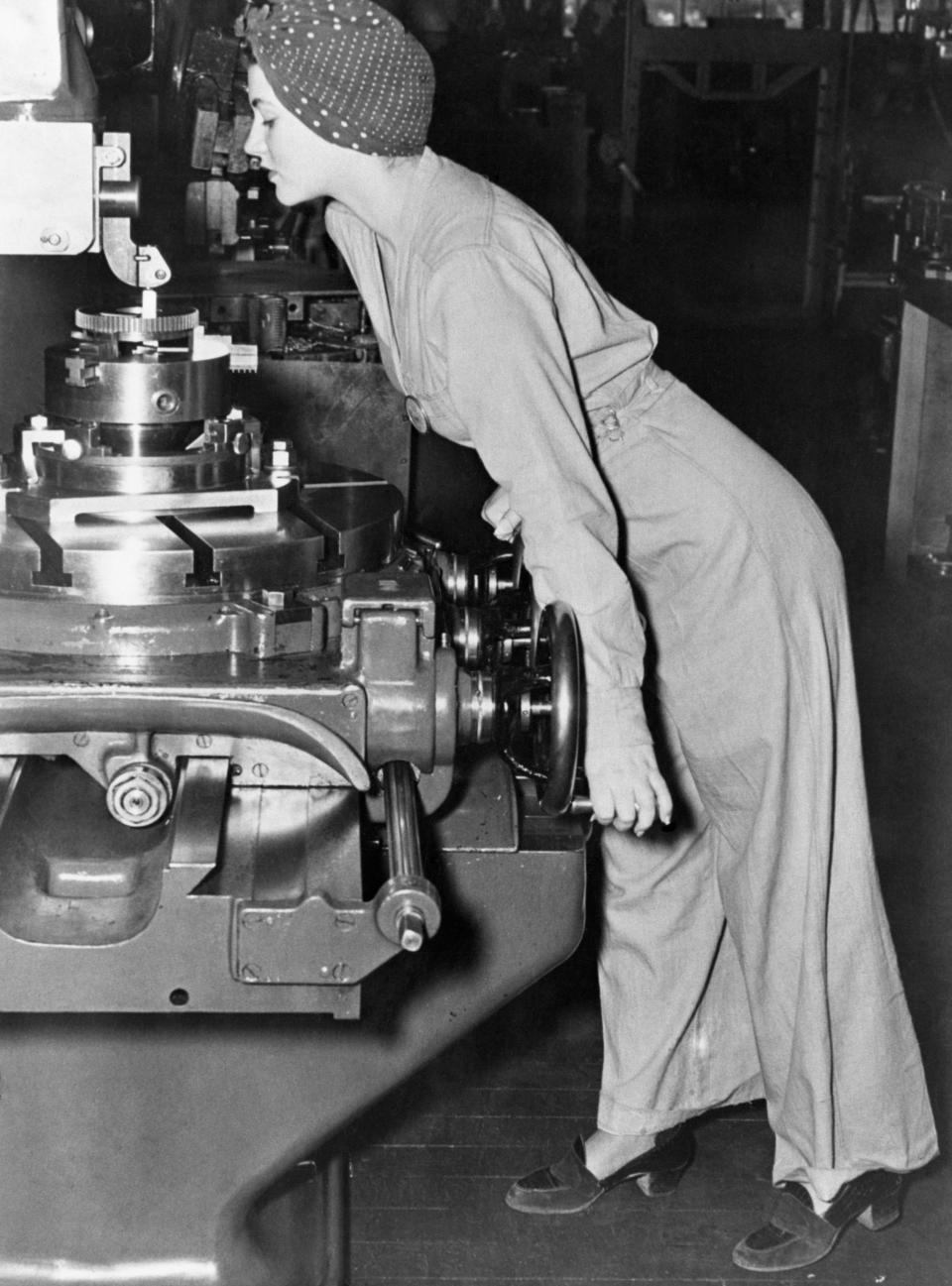
According to People, Parker Fraley contacted the World War II Home Front National Historical Park with her saved newspaper clipping, which included the original caption that listed her as the woman in the photo.
"I just wanted my own identity," she said. "I didn't want fame or fortune, but I did want my own identity."
However, it wouldn't be for another six years that 95-year-old Parker Fraley would be able to correct the record. In 2015, she was approached by Seton Hall University professor James J. Kimble, who had been on a quest to discover the true identity of Rosie the Riveter for six years.
After Parker Fraley showed Kimble the evidence that she had been Miller's inspiration, he published an article in an academic journal, "Rosie's Secret Identity," in 2016. People magazine then published a feature about the discovery, and Parker Fraley was finally recognized by the media at large as the inspiration behind Rosie the Riveter.
"She had been robbed of her part of history," Kimble told People. "It's so hurtful to be misidentified like that. It's like the train has left the station and you're standing there and there's nothing you can do because you're 95 and no one listens to your story."
Today, Rosie the Riveter is considered an icon of the feminist movement.
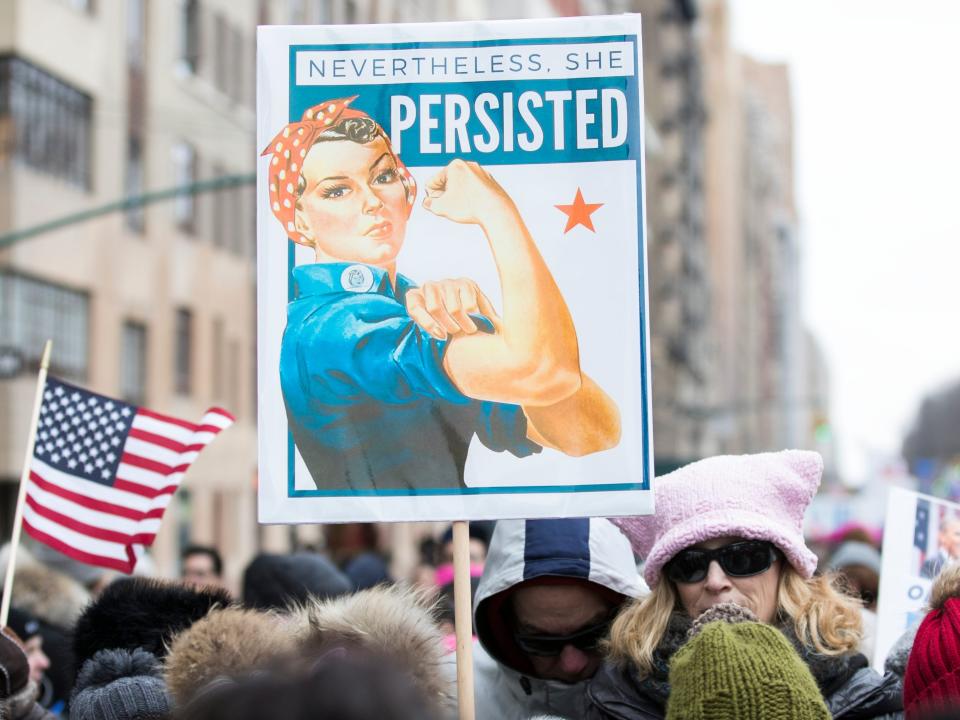
Miller's illustration of Rosie the Riveter has come to embody the tenacity and strength of women.
"The women of this country these days need some icons," Parker Fraley told People. "If they think I'm one, I'm happy about that."
Naomi Parker Fraley passed away on January 20, 2018, at the age of 96.
Read the original article on Insider

